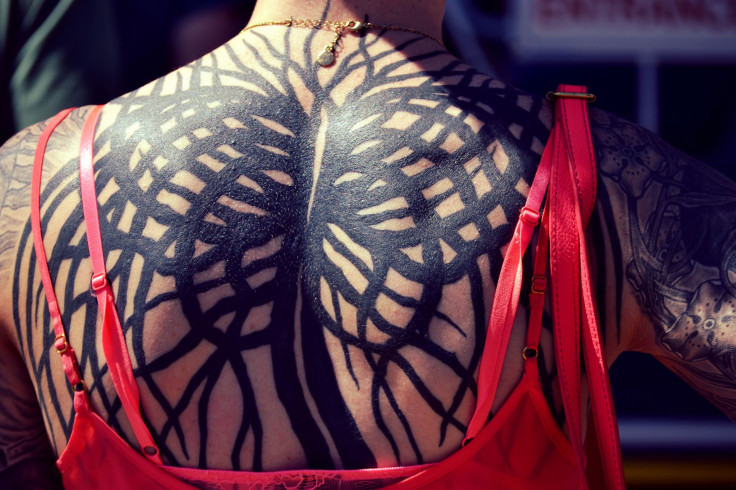Promiscuous Girl Or Average Jane? Women With Tattoos Perceived As Slightly More Sexually Active

Committing to a tattoo is a big decision that follows us for the rest of our lives. Permanent ink has the potential to influence our personal relationships, career, and even public perception. In men, tattoos have been associated with identity, personal interests, and masculinity, but what about women? Are they more promiscuous? A University of Texas at San Antonio (UTSA) study suggests people’s perception of women with tattoos and those without aren’t all that different.
Tattoos are seen as an illustrative extension of the bodies of men and women that tell us a narrative. Margot Mifflin, author of Bodies of Subversion: A Secret History of Women and Tattoo delves into tattooing primarily being a male preoccupation in the Western world. However, in the 1800s Circus Ladies were among the first women to adorn their body with tattoos in public during freak shows. Tattooing for these women was associated with capitalism and a business investment rather than liberalization and feminism.
Moving forward, tattoos have become more mainstream for both men and women. Female tattoos have evolved from becoming less taboo and more about self-expression and identity. Lower back tattoos, pejoratively known as a “tramp stamp,” became popular in the 2000s, synonymous with sexual liberation and confidence. However, the media has unfairly labeled lower back tattoos as a sign of promiscuity.
Needless to say, people have had mixed perceptions about women with tattoos, especially when it comes to promiscuity. Lisa Oakes, a UTSA graduate psychology major sought to determine how tattoos influence public perception of women who have them. Oakes surveyed a pool of UTSA students taking an Introduction to Psychology course, including 135 females and 86 males.
The students were asked to rate one of four photos of a San Antonio woman of mixed ethnicity in a gray sleeveless dress with a high neckline. In one photo, the woman possessed no tattoos. In the other three photos, the woman had a small tattoo on her right upper arm, where one photo pictured a butterfly, a second pictured a rose and the last picture was a skull and crossbones. The participants then were asked to rate the woman’s perceived openness to sex without commitment, perceived standards, and perceived sex drive. They were also asked to provide their opinions on her attractiveness, sexiness, intelligence, and warmth.
The findings revealed students viewed the woman as more open to sex without commitment, less selective, and having a higher sex drive when shown with the tattoo. However, the levels of openness, selectiveness and drive were at levels that would not be considered promiscuous, even when she had a tattoo. “And, although the woman was viewed a little less positively on some traits with the tattoo than without, overall, impressions were relatively positive both with and without the tattoo,” according to the press release.
The findings of this study correlate with a 2013 study published in the journal Archives of Sexual Behavior, which found men would be more likely to approach a woman on the beach if she had a butterfly tattoo on her lower back. Moreover, they believed it increased the odds of her being more open to their romantic advances, such as going on a date or even having sex on the first date. This adheres to tasteless expressions like: “The bigger the stamp, the bigger the tramp.”
But does a woman’s tattoo and her tattoo placement really speak volumes about her character? The jury is still mixed.
"The big reason for doing this research was that findings of previous studies were inconsistent with each other. Some found perceptions of tattooed women as promiscuous and some did not. Future research will help with understanding whether women with tattoos are really seen as worthy of the label 'promiscuous,'" Oakes said in the press release.
Until then, we’re all free to make our assumption about the 45 million Americans with at least one tattoo, but just remember not to make a donkey of yourself.
Sources: Oakes L. UTSA psychology student studies perceived promiscuity of women with tattoos. [study not yet published]. 2015.
Published by Medicaldaily.com



























